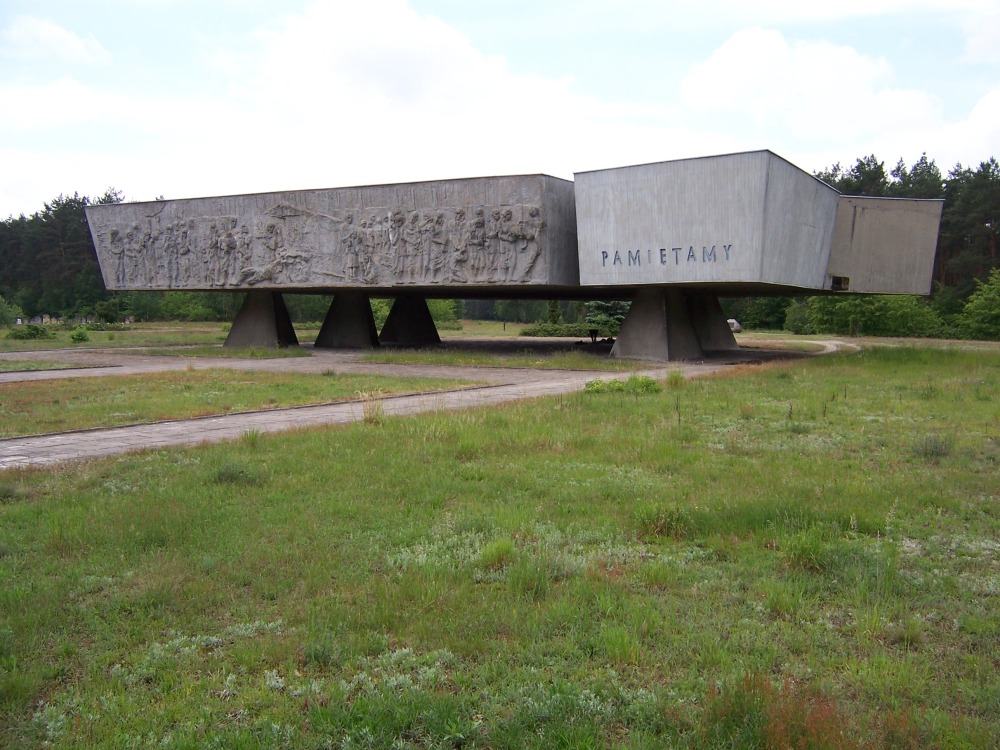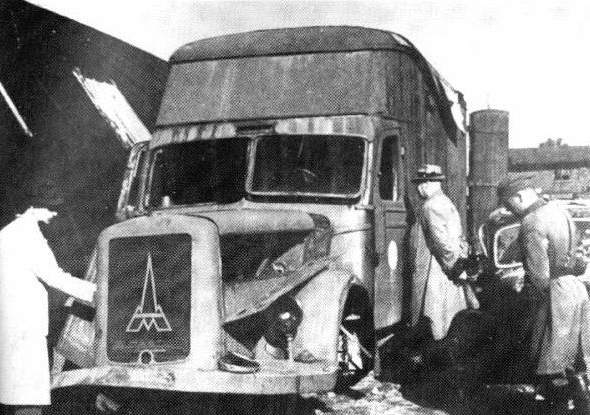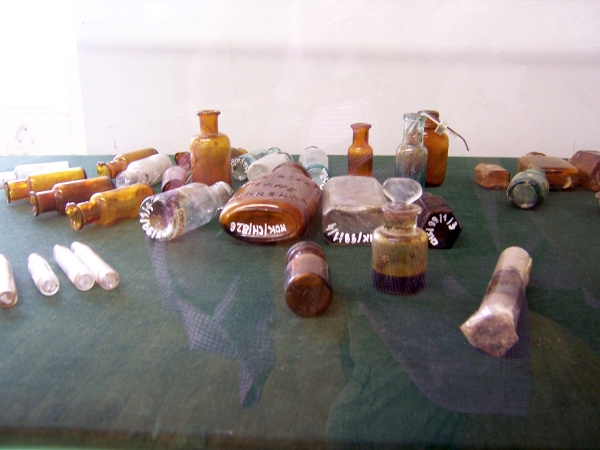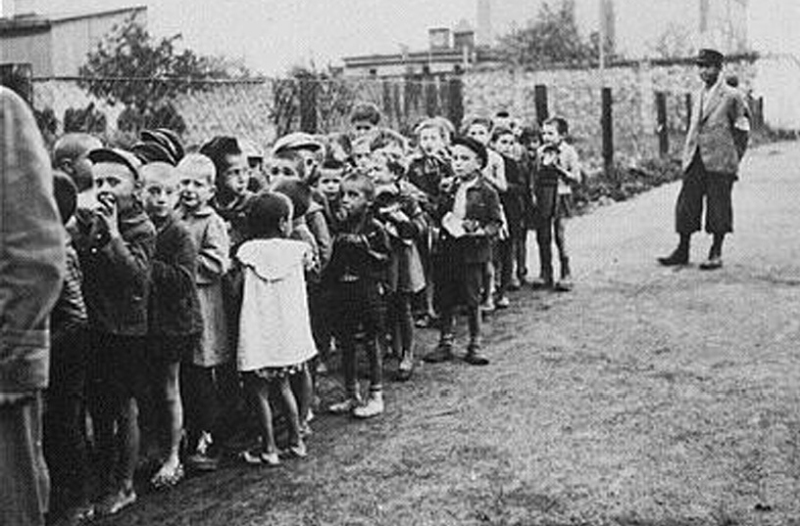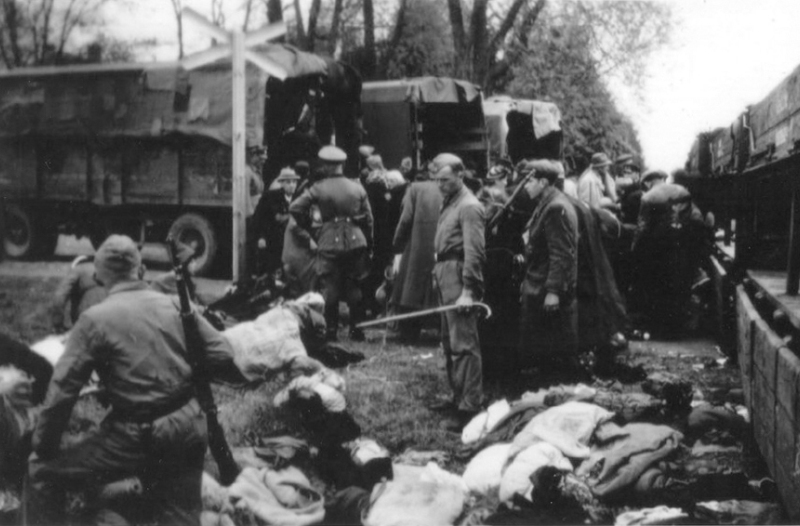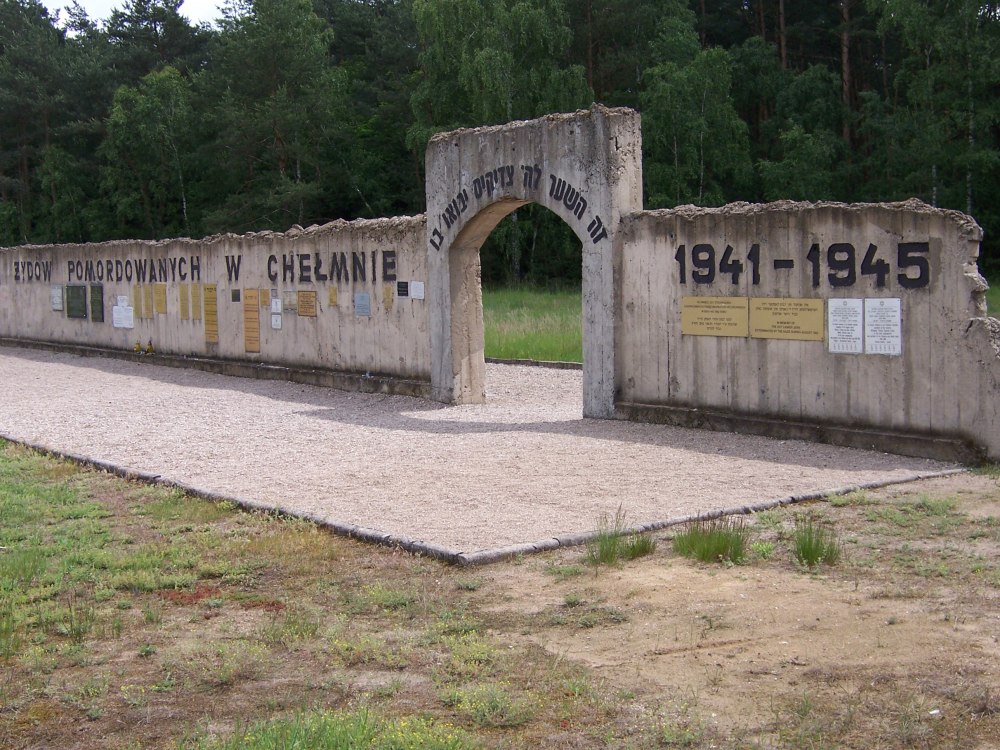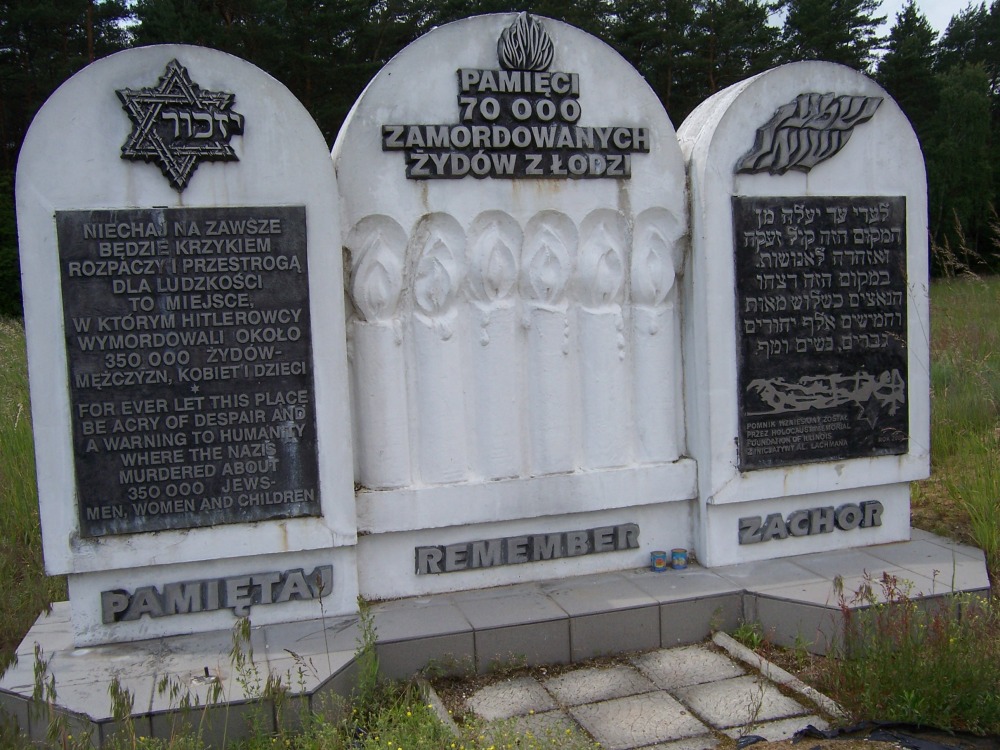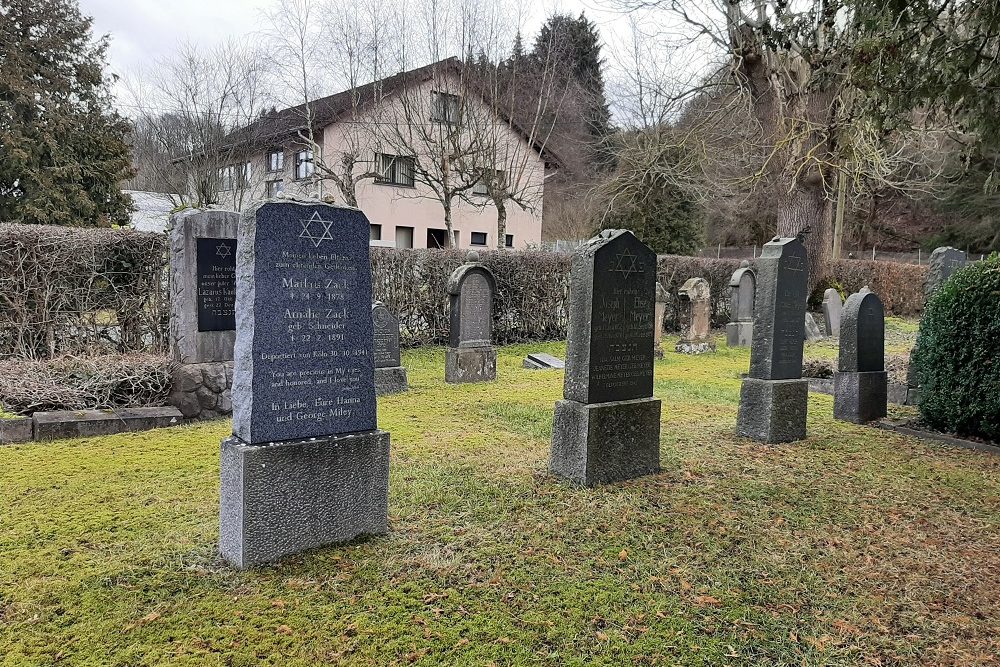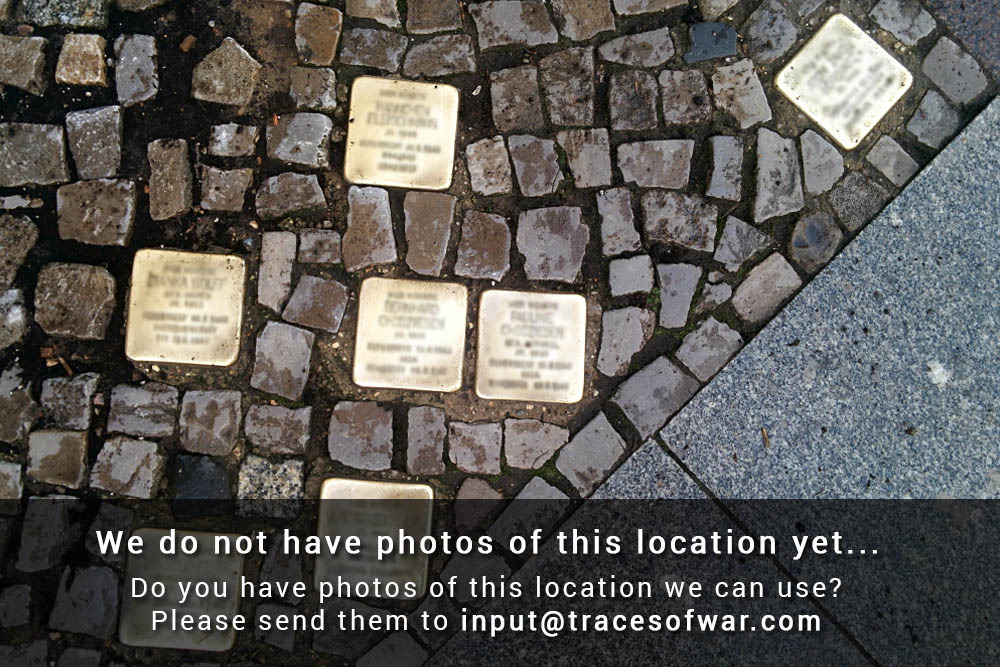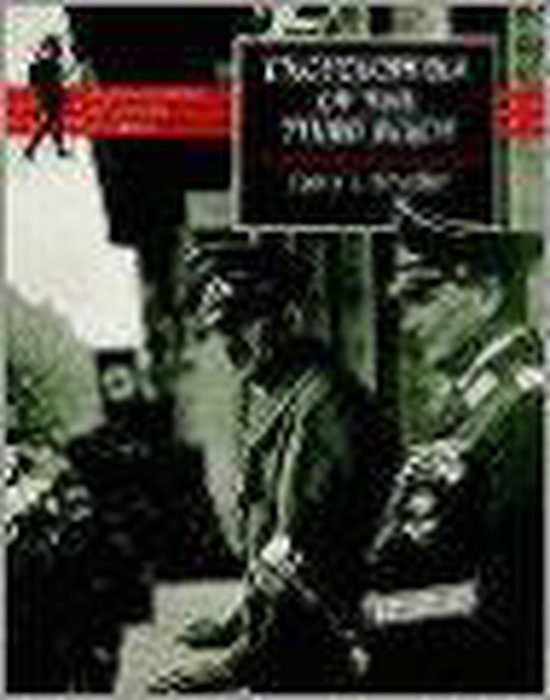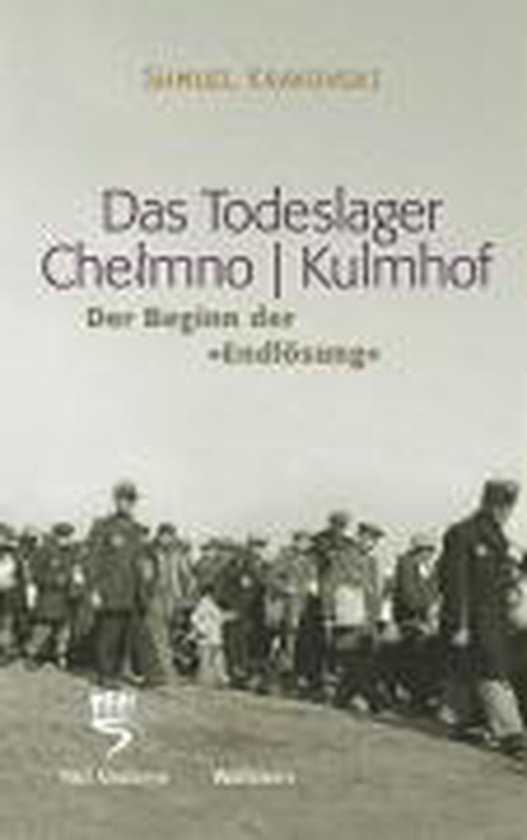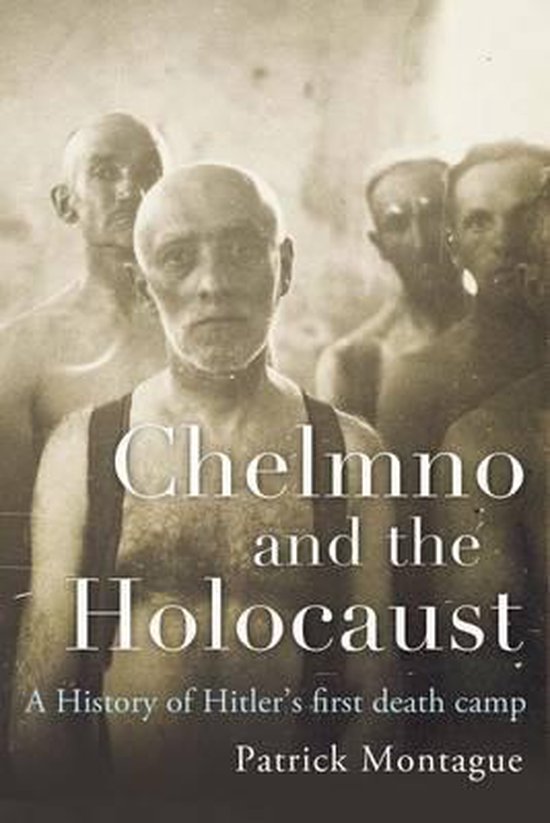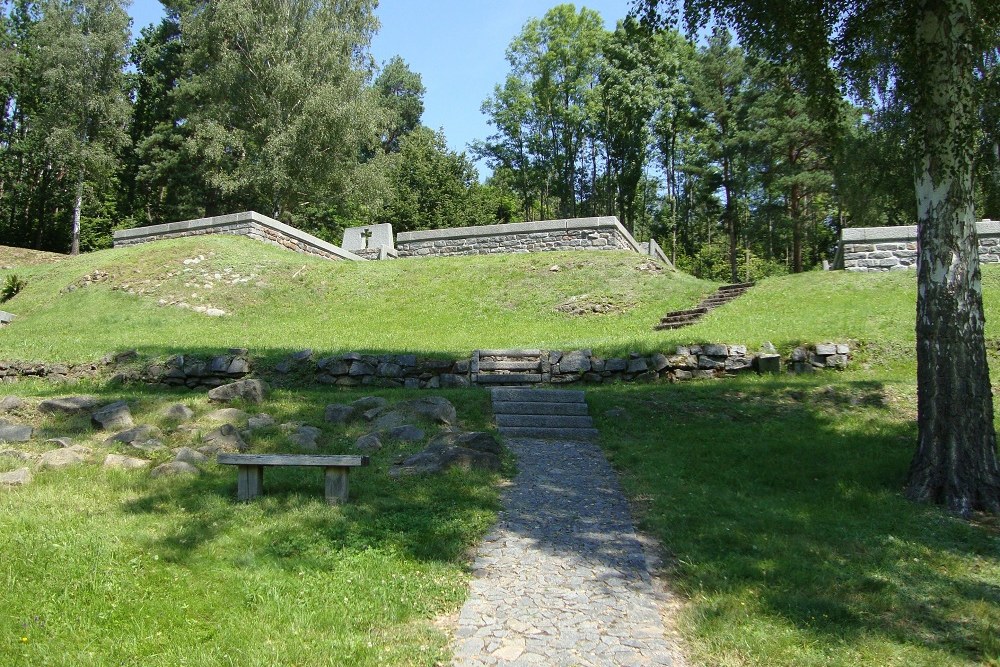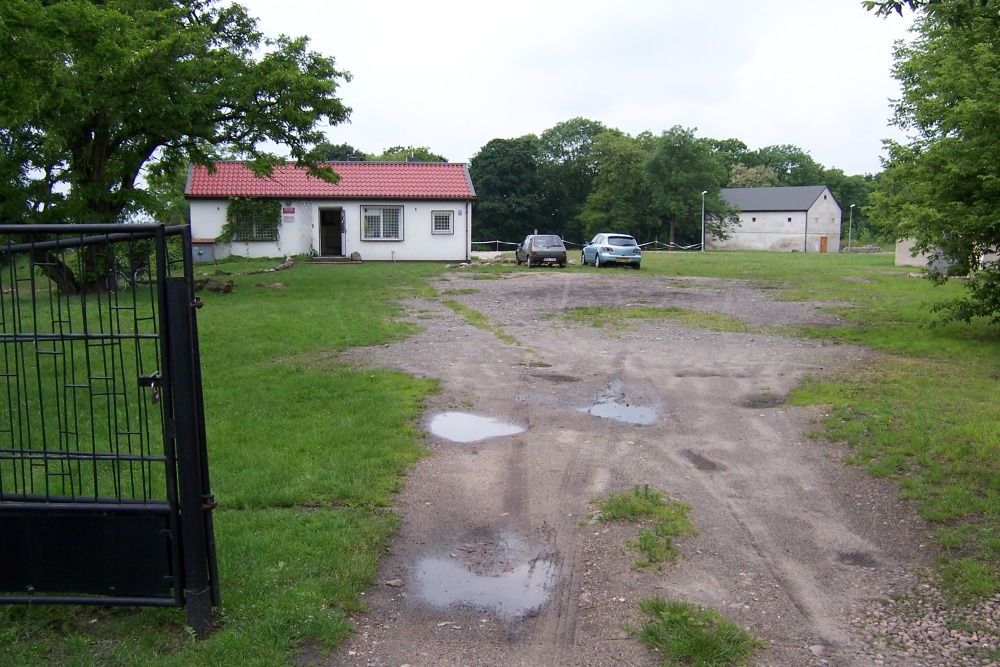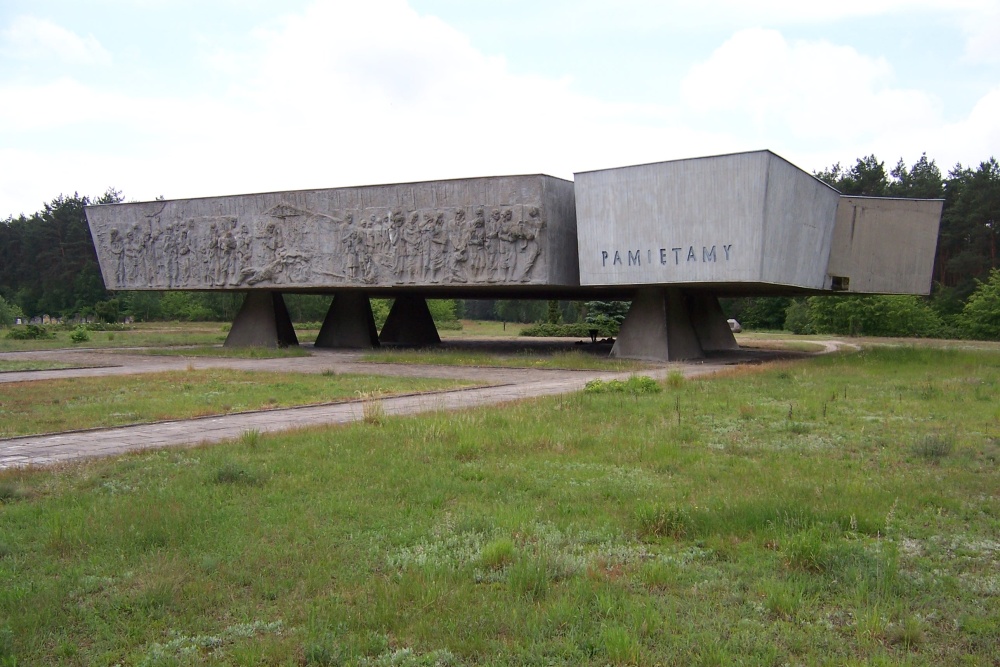Chelmno
Introduction
Vernichtungslager [Extermination camp] Chelmno – Kulmhof in German – was part of the systematic killing machine that the Nazis created in occupied Polish territories between 1939 and 1945. After the war, there was little evidence of the camp’s existence, and it was a long time before the events that unfolded there became known. Everything was successfully destroyed and, as far as was known, everyone was dead. The number of deaths is difficult to determine, because the Nazis successfully destroyed the records. However, in the second half of the twentieth century, horrific stories gradually emerged which traced the outline of yet another extermination camp.
Background
Chelmno nad Nerem (Kulmhof an der Nehr) was a small village in the west of Poland that was occupied by the German Wehrmacht in the autumn of 1939. The Germans immediately began to divide part of the newly occupied territory in the west of the country into regions, the so-called Gaue. Chelmno came under the Warthegau region (now Southwest Poland), of which Gauleiter Arthur Greiser assumed administrative leadership. Greiser was an anti-Semite in heart and soul, and immediately began to cleanse his region of Jews and Poles. All Jews who did not flee the area were put into a ghetto, separated from the 'Germanic' population. Ethnic Poles were also separated from the 'Germanic' population and were deported, via so-called 'transit camps', to the General Government region (today this area is located in central Poland).
Greiser also looked for other methods for getting rid of Jews. Normally, Jews living in the ghetto were used as forced labour for the German war effort. However, Jews that were weaker and could not withstand forced labour were a source of irritation for Greiser. He came up with the idea of rounding up the weakest in a lorry and gassing them, and in the autumn of 1941 he proposed this plan to the leadership of the Schutzstaffel (SS), the entity which held command over all security forces and security policy in Nazi Germany. The idea was accepted by the SS leadership and consequently a dilapidated mansion in Chelmno was designated as a suitable location for the experiment. The mansion was close to the railway network and in a sparsely populated area, just outside the village. SS-Hauptsturmführer Herbert Lange was put in charge of furnishing the property and putting it into use. Lange had previously conducted experiments with gassing disabled people in trucks. After the commissioning of Vernichtungslager Chelmno, SS-Hauptsturmführer Hans Bothmann quickly followed Herbert Lange as Kampcommandant. Bothmann was in turn replaced by Herbert Otto. These later Kampcommandants became more involved with the organisation of personnel than Lange, and created different Kommandos, groups of troops that had specific tasks in the camp.
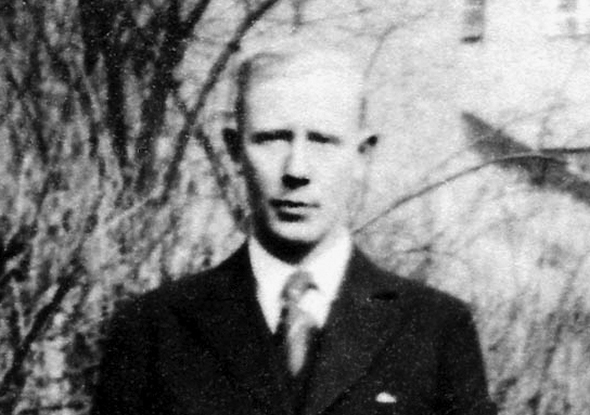
Hans Bothmann, the second commandant of the Chelmno extermination camp. Source: Konin State Museum, Poland
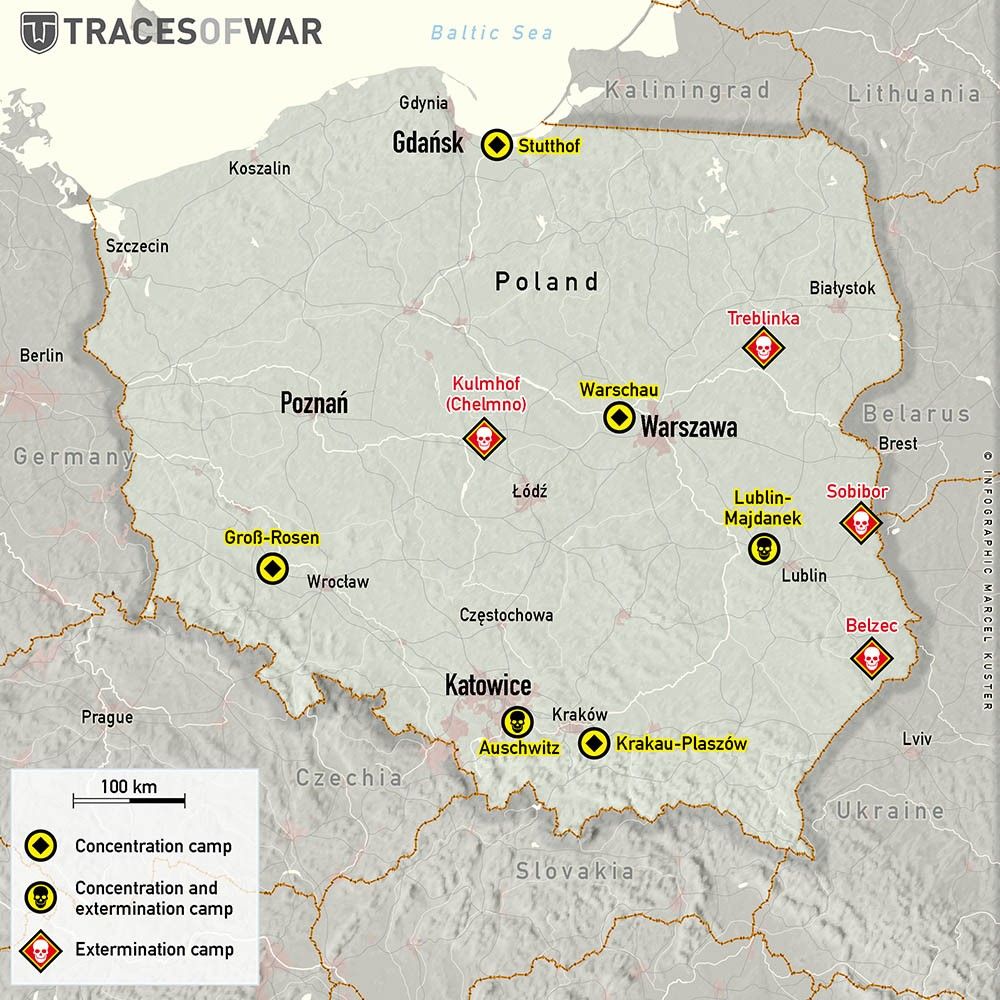
Location of Chelmno and other Nazi concentration and extermination camps in Poland. Source: Marcel Kuster, TracesOfWar
The structure of the extermination camp
There were four different Kommandos: Transportkommando, Schlosskommando, Waldkommando, and Mühlenwache. The Transportkommando was responsible for bringing Jews to Chelmno in trucks or by train. The Schlosskommando was responsible for guarding the estate and the mansion. They were also directly involved in gassing prisoners. Members of the Waldkommando were to guard the so-called ‘Outer Area’ outside the Chelmno Vernichtungslager, in a nearby forest, where they supervised the burning and burial of the prisoners' bodies. Finally, the Mühlenwache was, in the beginning of Chelmno's existence, responsible for guarding prisoners overnight in a grain mill, who had earlier arrived by train. The personnel of each of the four Kommandos often exchanged duties, at the direction of the camp commander. All personnel lived in houses in the nearby village of Chelmno, whose rightful inhabitants had been expelled. Other staff included local Poles that were used in the kitchen of the camp and for the cleaning of the personnel's quarters.
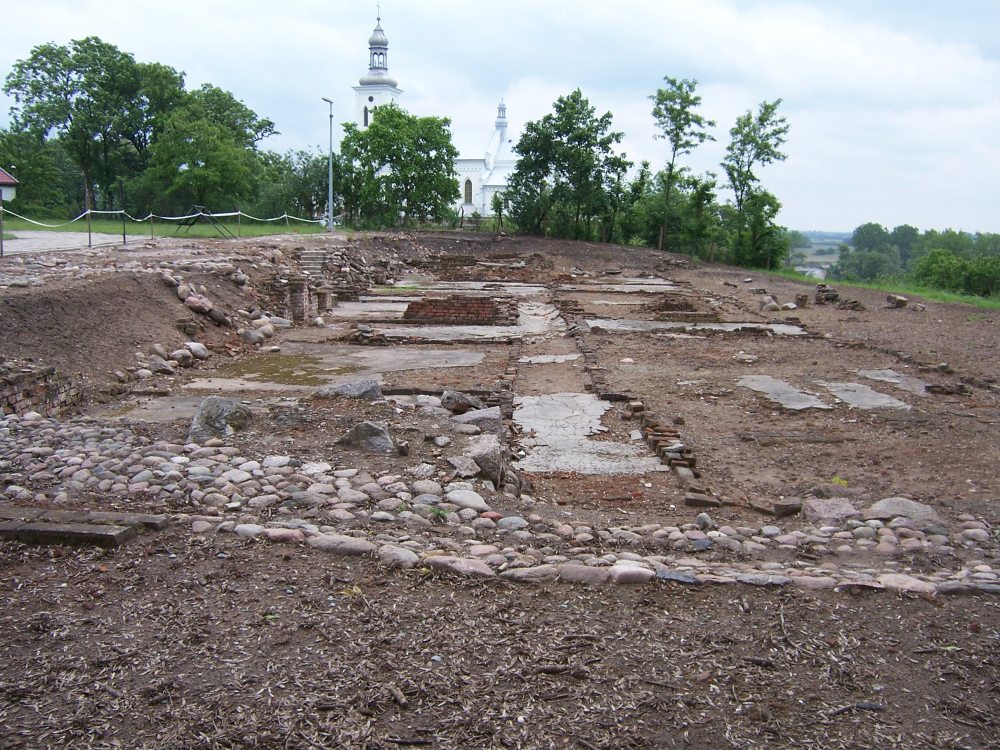
Excavations at the site of the former mansion where the Jews were led into the gas trucks. Source: Koos Winkelman
In Chelmno, the prisoners were killed by being gassed in a truck. The camp was supplied with three large trucks from the Reichssicherheitshauptamt (RSHA) technical department. All three were completely converted and made suitable for gassing people in the cargo compartment. The cargo compartments were made airtight and fitted with a flexible hose to connect the exhaust to the cargo area. In addition, a light bulb was hung in the cargo area so that the driver could see if the prisoners had been killed. The truck personnel were supplied by Reinhard Heydrich's Sicherheitsdienst (SD). These trucks were conceived of as a means of accelerating the murder of Jews in the early stages of the Endlösung [Final Solution]. The inauguration of the Chelmno site was to be synchronous with the original starting date of the Final Solution, 8 December 1941. Despite the postponing of the Wannsee Conference to 20 January 1942, the first Jews had been rounded up and killed at Chelmno on December 8th.
Several strong men were selected from each transfer of Jews to help in the Arbeitskommando. Tasks were divided amongst the men on a daily basis, such as sorting clothes, cleaning, carrying bodies and digging pits. The SS soldiers, who – as described above – were also given new tasks every day, stood guard. Due to the heavy nature of the work, it was necessary to add new men to the Arbeitskommando from every transport that arrived, because others died of exhaustion.
The Extermination Camp in Operation
The first Jews to be gassed came from the nearby town of Kolo, from where the entire population of 2500 Jews was deported to Chelmno. They were told they were going to a forced labour camp, before being taken to Chelmno by truck. Upon arrival, they were cordially addressed by the SS officer on duty. He repeated that they were to be transferred to a forced labour camp, and that they were to have the opportunity to shower beforehand. In the Chelmno mansion, the victims were led through a series of rooms in which they had to surrender their belongings. This was confirmed by Franz Schalling, an eyewitness who was part of the SS detachment in Chelmno. He said that prisoners were compelled to hand over everything in their possession: money, suitcases, jewellery, and all other items. The prisoners were then directed through a hallway until they came to a door marked "Zur Dusche". There were dressing rooms on both sides, in which male and female Jews alike were told to undress. They were also spoken to by an SS officer that kept up the pretence that the Jews would be taken to shower. They were then led through the door marked "Zur Dusche" to a cellar where other doors had the same inscription. The SS men then led the Jews to a loading dock at the back entrance of the mansion. At the far end, a truck equipped to gas them was waiting with its doors wide open.
The platform was made so that the edges exactly matched the width of the truck. There were high fences to the left and right. Some Jews sensed the danger of the situation they were in, but there was no way to escape and they were driven into the truck by the SS. When the truck was full, the doors were hermetically sealed and, accordingly to Franz Schalling's testimony, a guard would call out "GAS!", at which point the hose that connected the exhaust to the locked cabin was attached. This being done, the truck's engine was turned on, and only after the screaming and shouting was over did the truck start moving towards the Waldlager, where the funeral pyres and mass graves were located. By the time the gassing truck got there, the people in the cargo hold had suffocated.
After the war, eyewitness Shimon Srebrnik, himself a victim, stated that the trucks were filled with 80 people each and that those arriving in the trucks at the Waldlager were not only dead, but also covered with scratches and marks from fighting for their lives. Shimon's testimony clearly shows that people’s lives ended in terrible suffering. The truck was emptied and cleaned upon arrival. The bodies were burned and the human remains were thrown into a mass grave. According to former camp guard Bruno Israel, not everyone died in the gassing truck. When that was the case, the victims were shot in the head and the usual procedure of incineration and burial continued.
After this all took place, the truck returned to the mansion. Shimon Srebrnik also stated in his testimony that victims were stripped of their teeth after being taken out of the trucks, stating "[teeth with] gold fillings were violently pulled from their mouths", after which Shimon, as part of the Waldkommando, had to extract the gold from the teeth. As a result, we know that the Waldkommando forced labourers not only to fill mass graves or burn bodies, but also to take away "belongings". Another eyewitness, Fritz Hensen, who was part of the camp's SS staff, stated in a testimony taken during custody that all of the victims' possessions were sent to the ghetto administration for storage. This policy differed from that of other Vernichtungslager, that stored victims' belongings on the site of the camp.
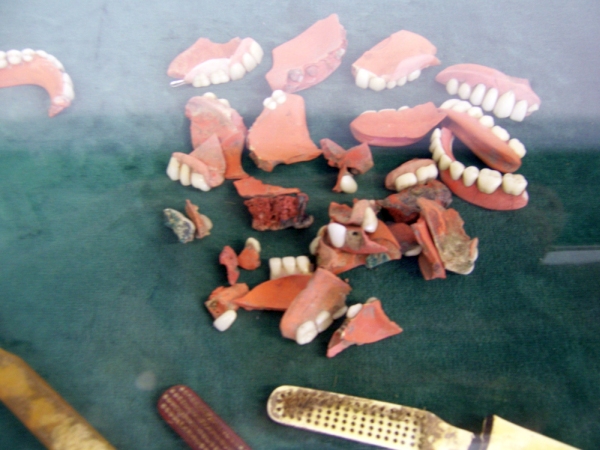
Dental prostheses that were excavated in Chelmno after the war and belonged to victims of the extermination camp. Source: Koos Winkelman
In the months that followed, Jews from several villages in the vicinity were deported to Chelmno, where they faced the same fate as the Jews from Kolo. What happened in Chelmno was soon no longer a secret locally, because the funeral pyres and mass graves were not concealed. Witnesses, such as the local forest ranger, quickly made the events known to the locals. However, the SS continued the pretence that the Chelmno mansion was a normal police station, where nothing out of the ordinary happened. Needless to say, this was not believed because of the amount of deportations and the witness testimonies from the nearby forest. Drunken SS officers didn't help to cover up the truth, as they lived among the locals and often talked about the events that went on.
Because the SS successfully destroyed the camp's records, it is difficult to trace prisoner movements exactly. It is clear, however, that the camp played a major role in the clearing of the Lodz ghetto between 23 June and 5 July 1944. Many people from the Lodz ghetto were gassed in Chelmno, especially in 1942. That fact is principally based on eyewitness accounts of perpetrators and victims. Many other Jewish communities in the so-called Warthegau were also deported to Chelmno and murdered. In addition to Jews, many others were gassed in Chelmno, including Sinti, Roma, Poles, and 88 children from the village of Lidice in the Czech Republic (which had been destroyed in retaliation for the murder of SS-Obergruppenführer Reinhard Heydrich).
The first decommissioning of Chelmno
From September 1942 extensive attempts were made to erase all traces of the Chelmno massacre. SS Standartenführer Paul Blobel was responsible for this. Corpses previously thrown into mass graves were exhumed and burned by forced laborers. In addition, a grinding machine was purchased to further fragment bone residue that remained after incineration. Trees near the Waldlager were used as firewood. After burning and grinding, the ash and bone remains were thrown into the nearby river Ner. Of course, this job was also mainly carried out by Jewish forced labourers, pushed on by the SS guards. The workers often suffered extreme maltreatment because, in the eyes of the SS, things were not going fast enough. All this led up to the March 1943 order to close the Chelmno extermination camp. All camp personnel were transferred to Feldgendarmerieeinheit SS-Division Prinz Eugen in Yugoslavia, mainly to hunt down partisans there.
On 5 March 1943, a party to celebrate the closing of the site was organised by Arthur Greiser. The entirety of Chelmno staff and their partners were invited. During March 1943, the Chelmno site was completely dismantled. On April 7 1943, the crematoria and parts of the mansion were blown up. All traces of the annihilation that had taken place at the site were carefully erased. The forced labourers were executed, but not before some managed to write brief notes about what they had witnessed. They hid these notes in the ground and in other places where they hoped the Germans wouldn't find them. After the war, some of the notes were found, and they add to the record of events in Chelmno.
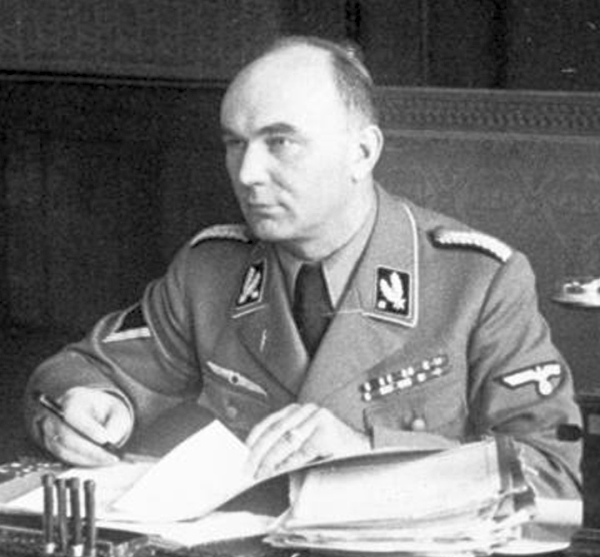
Arthur Greiser. On March 5 1943 he organized a party after the first closure of the Chelmno extermination camp. Source: Bundesarchiv, Bild 183-E05455 / CC-BY-SA 3.0
Reopening and second decommissioning
In a final effort to exterminate as many Jews from the Polish ghettos as possible, the Chelmno extermination camp was reopened in April 1944 with the same commander and staff members (if they were still alive). The structure, however, was adapted. The cellars of the mansion were renovated to accommodate forced labourers. No other renovations were carried out. Jews were brought to a church in Chelmno before being moved to the Waldlager to be killed. At the Waldlager, two wooden barracks had been built for this purpose. The victims were ordered to undress in the first barracks, after which they were led to the second barracks through a door with a sign reading "Zur Dusche". This barracks was connected by a corridor to a platform next to the gassing trucks. Once the victims were gassed, they were burned in two large, purpose-built crematoria.
In the months that followed, many thousands more victims were murdered, after which the Chelmno camp was – for the second and final time – completely dismantled in October 1944. All the bodies were taken out of the mass graves and burnt. The bones were ground down and thrown into the river Ner. All documentation was burned and the crematoria and wooden barracks were completely destroyed. In a post-war testimony, camp guard Bruno Israel said that every stone was ordered to be broken down and that there was even a final inspection to make sure everything had been destroyed.
After the entire camp was dismantled, the forced labourers were executed. The Chelmno extermination camp, the Nazis hoped, had disappeared from the face of the earth. Fortunately, nothing was further from the truth and after the war, traces were slowly but surely found at the location. In combination with witnesses' stories, a picture could be sketched of the horrors that took place here. Estimates of numbers killed during both the operational periods of the extermination camp range from 145.000 to 350.000 dead. However, the lack of camp records makes estimation extremely difficult.
Trial of the perpetrators
On May 24 1945, after the end of World War II in Europe, the Soviet Union began to investigate the abuses at the Chelmno extermination camp. Official prosecution took a long time because it was very difficult to find material evidence. Between November 1962 and June 1965, three separate trials were held, in which fourteen former members of the German camp personnel of Chelmno were tried. Günter Fuchs received the most severe sentence, life imprisonment, for his role in the deportation of Jews from the Lodz ghetto to the Chelmno Vernichtungslager . Three of Chelmno's 14 former employees were acquitted and released. Camp commanders Lange and Bothmann were killed in 1945 and 1946 respectively. Lange most likely died in the Battle of Berlin in April 1945, and Bothmann committed suicide in British captivity in April 1946. Two of the three deputy camp commanders, Herbert Otto and Albert Plate, died in the war, and Walter Piller, Bothmann's deputy in the second use of the extermination camp, was sentenced to death by a Polish court (the sentence was carried out on 19 January 1949).
Chelmno today
While there was little left of the former Chelmno extermination camp, several monuments and landmarks have since been built. In 1957 an obelisk near the Chelmno mansion was unveiled by the Jewish community. Seven years later (1964) the Polish government installed a large concrete memorial stone that featured text inscriptions and images of prisoners. In 1990 a small museum was opened on the site of the former Waldlager. In addition, a memorial wall that incorporates inscriptions of 37.5 meters in length was built. In 1991 a monument to eyewitness Stanislaw Kaszinsky, a Pole from Chelmno, was unveiled. Kaszinsky had passed on the events in the extermination camp to the Polish resistance and was executed for this in 1942. In 1994, a memorial cemetery was opened in the Waldlager in remembrance of the liquidation of the Lodz ghetto. Excavations of the foundation and basement of the Chelmno mansion began in the late 1990s. Although the mansion had been destroyed, the underground cellars remained reasonably intact. The excavations allow visitors to see the basement corridor, through which many prisoners passed to their death in the gassing trucks. In 2003 work began to locate and excavate several incineration sites in the former Waldlager, and several mass graves were located. Due to the expense of the operation, these excavations are still in process.
Definitielijst
- Endlösung
- Euphemistic term for the final solution the Nazis had in store for the “Jewish problem”. Eventually the Endlösung would get the form of annihilating the entire Jewish people in extermination camps.
- Gauleiter
- Leader and representative of the NSDAP of a Gau.
- ghetto
- Part of a town separated from the outside world to segregate Jewish population. The establishment of ghettos was intended to exclude the Jews from daily life and from the rest of the people. From these ghettos it was also easier to deport the Jews to the concentration and extermination camps. Also known as “Judenviertel” or Jewish quarter.
- Jews
- Middle Eastern people with own religion that lived in Palestine. They distinguished themselves by their strong monotheism and the strict observance of the Law and tradition. During World War 2 the Jewish people were ruthlessly persecuted and annihilated by the German Nazis. . An estimated 6,000,000 Jews were exterminated.
- Lidice
- Village in Czechoslovakia which was demolished in 1942 as a retaliation against the assassination of Reinhard Heydrich . The men were brought before a firing squad while the women were sent to concentration camps.
- Nazi
- Abbreviation of a national socialist.
- ranger
- American name for a specially trained soldier (similar to commando).
- resistance
- Resistance against the enemy. Often also with armed resources.
- RSHA
- Reichssicherheitshauptamt. The central information and security service of the Third Reich.
- Schutzstaffel (SS)
- The Schutzstaffel commanded by Heinrich Himmler was a very powerful organisation within the Third Reich. The original goal of the SS was to protect Adolf Hitler and other Nazi’s but soon the SS was deployed for several military, security and police tasks. The SS guarded inter alia the concentration camps and manned the Einzatzgruppen. The armed branch of the SS was the Waffen-SS.
- Sicherheitsdienst (SD)
- The national socialistic intelligence and counterespionage service of the SS.
- Soviet Union
- Soviet Russia, alternative name for the USSR.
- Vernichtungslager
- A camp during World War 2 where large groups of people, mainly Jews and Gypsies were liquidated by the SS by gassing. Auschwitz, Treblinka and Majdanek are three examples of extermination camps.
- Wannsee Conference
- Conference at the Wannsee on 20 January 1942. The Nazi’s made final agreements about the extermination of Jews in Europe, the Final Solution (Ëndlösung).
- Wehrmacht
- German armed military forces, divided in ground forces, air force and navy.
Information
- Article by:
- Matthias Ouwejan
- Translated by:
- Tomas Brogan
- Published on:
- 21-11-2020
- Last edit on:
- 21-05-2022
- Feedback?
- Send it!
Related sights
Related books
Sources
- KRAKOWSKI, S., Das Todeslager Chelmno | Kulmhof, Wallsein Verlag, Göttingen, 2017.
- MONTAGUE, P.,, Chelmno and the holocaust, I.B. Tauris, Londen, 2012.
- ROOZEBOOM, TON, De nazi moord fabrieken, De Lantaarn + Aspekt, Ede en Soesterberg, 2017.
- SNYDER, L., Encyclopedia of the Third Reich, Wordsworth, Hertfordshire (UK), 1998.
- www.deathcamps.org/occupation/chelmno
- www.holocaustresearchproject.org/survivor/podchlebnik
- www.holocaustresearchproject.org/survivor/srebrnik
- www.holocaustresearchproject.org/trials/chelmnowachmeister
- www.holocaustresearchproject.org/trials/Hensentest
- www.zchor.org
- collections.ushmm.org
- www.youtube.com
